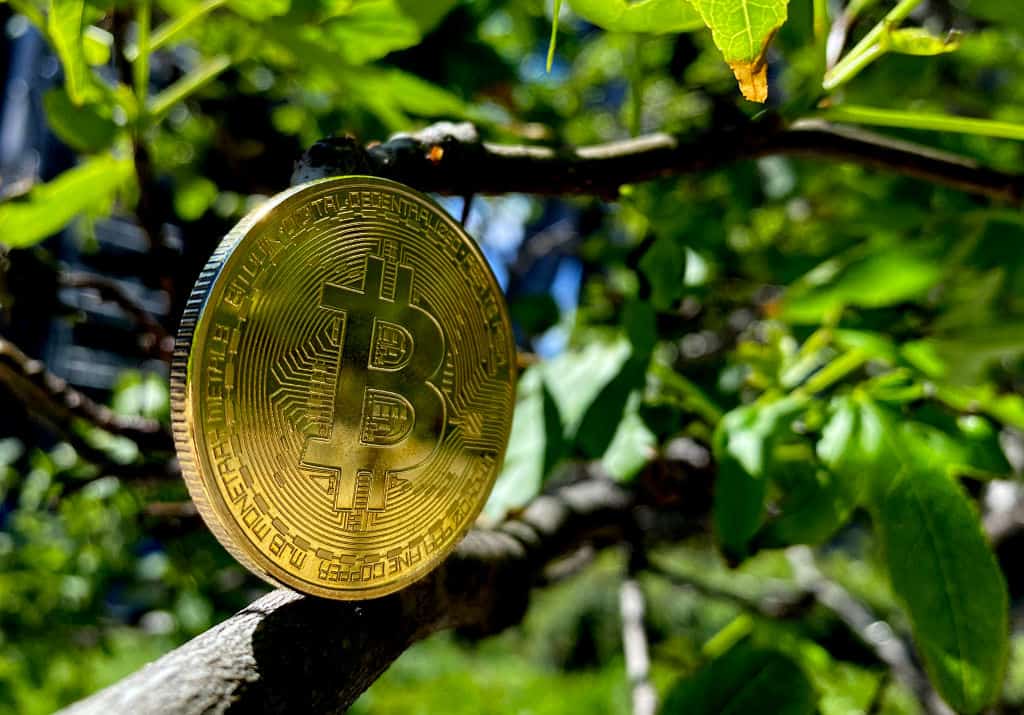In this issue
- Bitcoin ETFs: In a tight spot
- Taproot upgrade: Glacial progress
- Chinese miners: Hide and seek
From the Editor’s Desk
Dear Reader,
In the digital asset space, the aphorism “all that glitters is not gold” holds as true as it does anywhere else.
And digital gold — in the form of the cryptocurrency that started the digital asset revolution — is back in the news.
With Ethereum lately having put a gleam in investors’ eyes, thanks to the much-anticipated promise of its technology, Bitcoin underwent a technological upgrade of its own at the weekend. There was little of the sparkle that surrounded Ethereum’s London hard fork in August, but the Bitcoin network’s Taproot soft fork — its most significant upgrade in four years — ushered in a number of improvements, focused mainly on privacy, transaction speed and costs.
The last big Bitcoin network revamp, in 2017, was followed by several months of gains that saw the original crypto hit valuations it didn’t attain again until two years later.
It’s too early to say whether the Taproot upgrade may be followed by similar appreciation, given the Bitcoin blockchain’s lack of utility compared to other, younger networks such as Ethereum and Solana. Nevertheless, BTC more or less held its value in the days following the U.S. Securities and Exchange Commission’s decision to shoot down the planned launch of a Bitcoin spot-price exchange-traded fund last week, attesting to its resilience, if not its dynamism.
And despite the bearish mood that appears to have taken hold of the broader crypto market since Monday, bets on its oldest token still comfortably pass the sanity test. Bitcoin’s underlying technology may be more 20-teens than ’20s, but BTC’s potential as a store of value is such that those holding it are more than a little reluctant to spend it — in contrast to the ease with which they spend tokens whose key utility involves facilitating an exchange of value.
Like gold, Bitcoin may not have many uses. But in uncertain times, it’s reassuring to know it’s there.
Until the next time,
Angie Lau,
Founder and Editor-in-Chief
Forkast.News
1. Spot of bother
By the numbers: VanEck — over 5,000% increase in Google search volume.
Global investment manager VanEck’s Bitcoin futures exchange-traded fund went live on the Chicago Board Options Exchange this week, after the U.S. Securities and Exchange Commission signaled that U.S. investors will unlikely gain access to a Bitcoin spot ETF this year by rejecting VanEck’s application for one last week. Nevertheless, American investors now have three Bitcoin futures ETFs from which to choose. VanEck’s new fund, trading under the ticker XBTF, closed at US$59.73 on its first trading day, down 1.94% from its US$60.91 open.
- ProShares’ Bitcoin Strategy ETF, which trades on the New York Stock Exchange, tumbled 8.54% between Monday’s market open and its Tuesday close, closely tracking an 8.46% slump in the price of Bitcoin. Valkyrie’s Nasdaq-listed Bitcoin Strategy ETF fell 8.55% over the same period.
Forkast.Insights | What does it mean?
Spot ETFs, which offer direct exposure to Bitcoin, have consistently failed to clear U.S. regulatory hurdles, although not for lack of effort on the part of the asset managers seeking to offer them. The SEC has rejected every application for a Bitcoin spot ETF since 2013, approving only funds based on futures contracts — and even then only recently.
The SEC has repeatedly cited its concern over the potential for market manipulation as the reason a spot ETF is unlikely to see the light of day in the United States. Additionally, the regulator has expressed misgivings about possible “wash trading” involving the same financial institution being on both sides of a trade, generating extra fees for minimal risk, and the scope for “manipulative activity involving the purported ‘stablecoin’ Tether.” The operation of futures ETFs by contrast, takes place under the Investment Company Act of 1940, which SEC Chairman Gary Gensler says helps provide “significant” protection for investors.
Since its debut last month, ProShares’ futures-based Bitcoin Strategy ETF has amassed some US$1.4 billion in assets, demonstrating that the market has an appetite for exposure to Bitcoin. But the SEC appears to be in no hurry to open the floodgates for spot trading, no matter how hungry investors may be for it.
Indeed, a broader crypto market downturn over the past couple of days seems to have illustrated the SEC’s point that it can’t protect investors from the volatility associated with Bitcoin and other tokens.
2. Taproot’s unhurried arrival

By the numbers: Taproot — 1,800% increase in Google search volume.
Taproot, the biggest upgrade to the Bitcoin protocol in four years, went live over the weekend, improving the network’s privacy and efficiency. The last major upgrade to Bitcoin was SegWit in August 2017, when Bitcoin was trading just above US$4,000, enabling the layer-2 protocol Lightning Network for faster transactions. In the following months, Bitcoin rallied to almost US$20,000 — at that time a record high — on the back of the boom in initial coin offerings.
- Taproot is a soft fork upgrade to the Bitcoin network that includes multiple improvements known as Bitcoin Improvement Proposals. Its shift from the Elliptic Curve Digital Signature Algorithm to the Schnorr signature scheme makes transactions more difficult to trace, improving privacy.
- The upgrade also includes the adoption of Tapscript, Bitcoin’s new, more developer-friendly programming language, which is expected to entice more applications onto the Bitcoin network.
- Bitcoin dipped below the US$60,000 mark this week amid a broader crypto market sell-off. The world’s first cryptocurrency was trading at US$59,443 at press time, a 11.3% drop over the previous seven days, according to CoinGecko data.
Forkast.Insights | What does it mean?
Bitcoin has become the great lady of blockchain. Revered for its ability to attract investors, it has become a byword for the entire crypto industry.
However, upgrading a blockchain worth more than US$1 trillion only every few years is emblematic of what happens when a network relies on a vote for every single change. Bitcoin’s upgrade approval process is labyrinthine, at best: anyone can suggest an update on Github (there are more than 30,000 commits, or suggestions, from more than 800 contributors), but community approval is required. Once approval is granted, miners have to accept the update and upgrade their mining software.
According to Bitnodes, which tracks the versions of the network miners are running, only one in three are using the latest software, which compounds the difficulty of upgrading the network. Upgrades are linear, meaning that for a user to run the latest version of the software, they typically have to upgrade through its previous iterations first.
Although Bitcoin’s ponderous approach to upgrades (and transaction times) has for now been accepted, decentralized finance is rapidly eating into the original crypto’s market share. At the beginning of the year, Bitcoin accounted for more than 70% of all the value locked into crypto. Today that figure is down to 43% and falling.
If Bitcoin wants to stay on top, it’ll need to innovate more rapidly than it has done in the past.
3. Miners underground

China’s crypto mining sector may have been officially vanquished, but it seems that holdouts remain. Now, warnings against engaging in mining are being reiterated, most recently by the National Development and Reform Commission — a macroeconomic management agency — which is considering levying punitive electricity tariffs on recalcitrant crypto miners. NDRC spokesperson Wei Meng on Tuesday said that crypto-related activities were illegal and that mining could affect China’s self-professed goal of carbon-neutrality by 2060.
- Chinese authorities will also focus on raiding mining facilities run by state-owned enterprises, and on industrial clustered mining.
- Over the weekend, the former deputy chief of the Jiangxi Provincial Committee of the Chinese People’s Political Consultative Conference, a political advisory body, was expelled from the Communist Party after he was found to have been supporting crypto mining.
- The U.S. has emerged as the global leader in Bitcoin mining in the aftermath of China’s mining exodus, now accounting for 35.4% of the global hashrate. China’s former 75.53% dominance of world hashrate has dropped to zero in terms of declared mining operations, according to data published by the Cambridge Centre for Alternative Finance.
- Despite China’s clampdowns on crypto, one corner of the sector — mining rig manufacturing — is still thriving. Canaan, a Nasdaq-listed, Beijing-headquartered crypto mining hardware maker, is reporting Q3 net income of US$72.5 million, compared to a net loss of US$13.5 million a year ago. The company is expecting revenues to increase by a further 35% to 50% in Q4 this year.
Forkast.Insights | What does it mean?
The Bitcoin mining saga in China is full of twists and turns. Despite China’s share of declared Bitcoin mining falling to nil in August, in October, Chinese mines were still active, with f2pool, one of the world’s largest, claiming it would take until the end of the year to wind down its operations.
But a different part of China’s crypto industry — mining rig manufacturing — is untouched by government crackdowns and appears to be more profitable than ever. Beijing-based Canaan, one of the largest Bitcoin mining machinery manufacturers in the world, is reporting record earnings in Q3 and projects Q4 earnings to be up to 50% higher than that.
Although the U.S. and other countries saw their share of global hashrate increase, according to the Cambridge analysis, covert mining is more than likely still taking place in China, routed through virtual private networks that make it appear that the computers are operating outside the nation’s borders.
Recent hashrate increases in Ireland and Germany are probably the result of this use of VPNs and proxy servers, according to the Cambridge research. Energy prices in those two markets are among the most expensive in Europe, meaning any sizable Bitcoin farms are unlikely to be making a profit.
China may have imposed a blanket ban on crypto mining, but Beijing’s vast law enforcement apparatus is struggling with the task of locating mining operations tucked away out of sight in places such as in Sichuan, a mountainous southern province that was formerly home to much of the country’s mining activity.
Chinese miners had long taken measures to protect their operations before the arrival of the total ban. Old habits, it seems, die hard.
